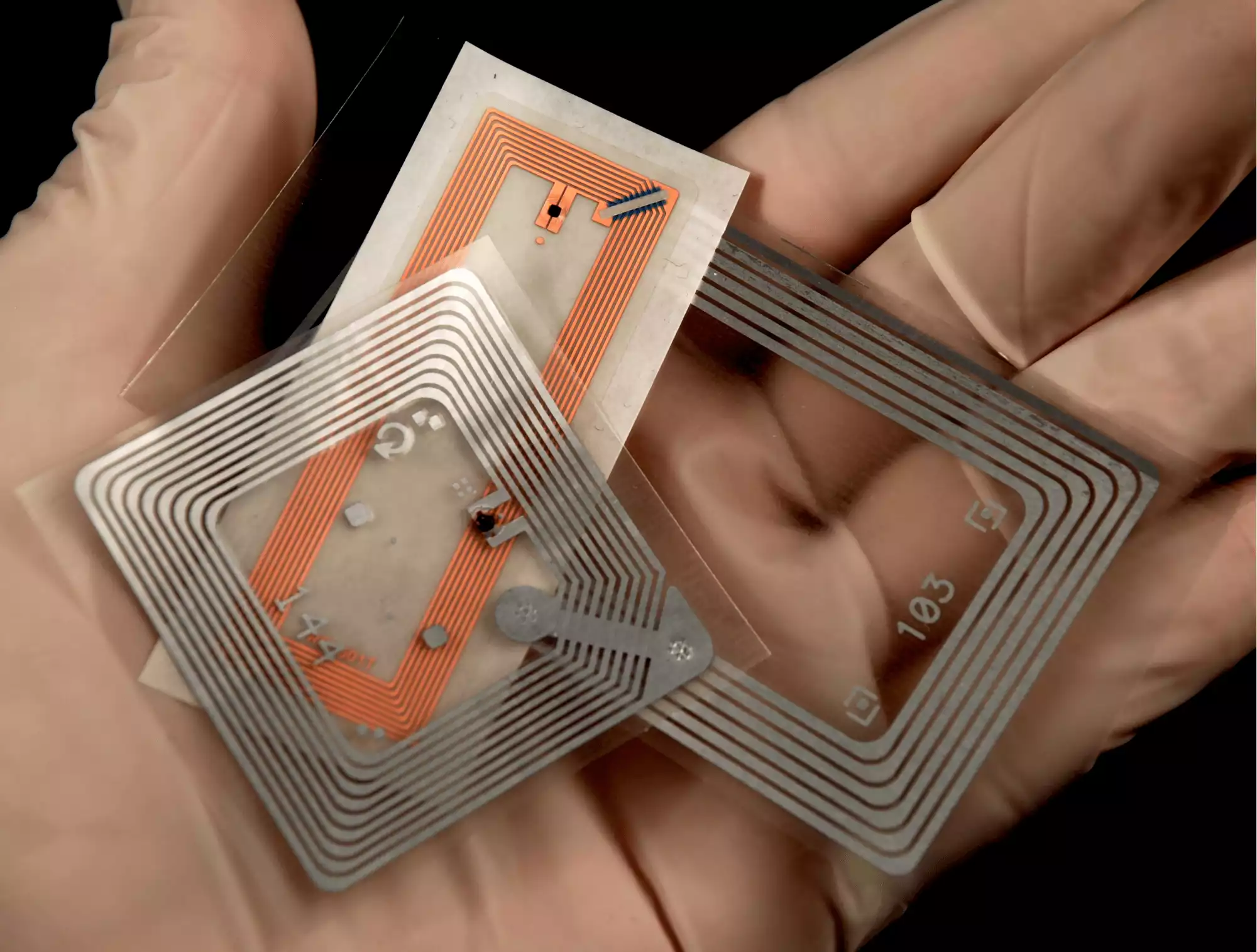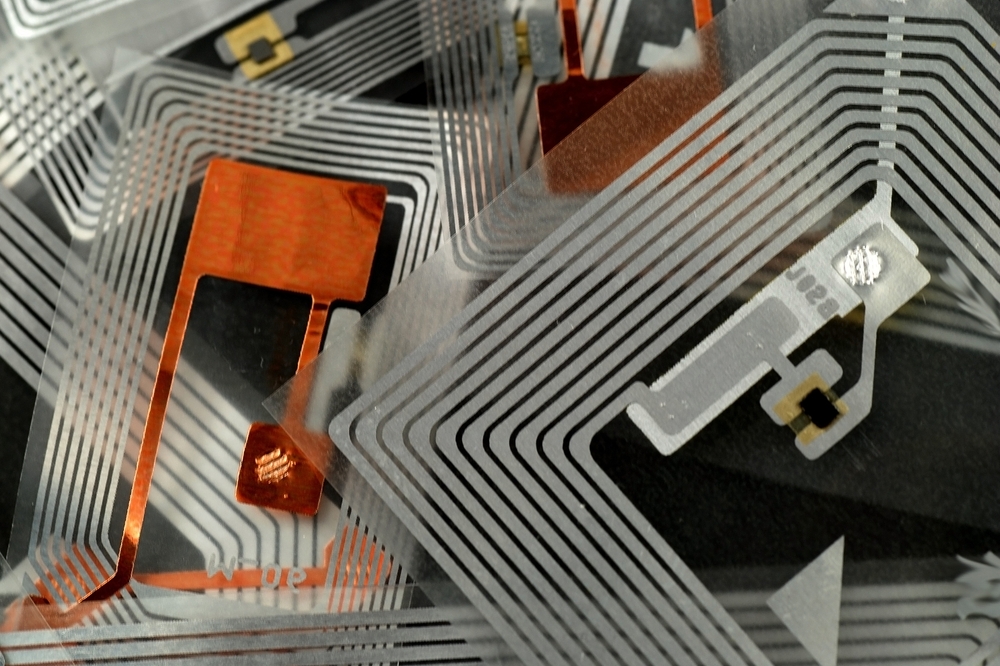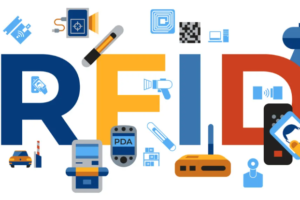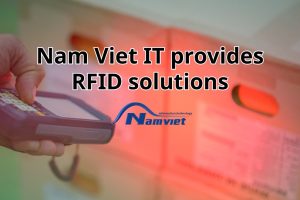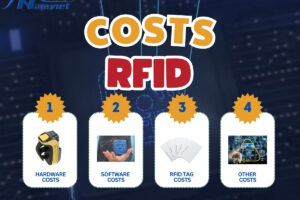RFID chip standards are needed to enable interoperability between different RFID systems. Nam Viet IT, with over 10+ years of experience, is committed to providing customers with optimal RFID technology solutions at reasonable costs, improving management and operational efficiency for businesses.
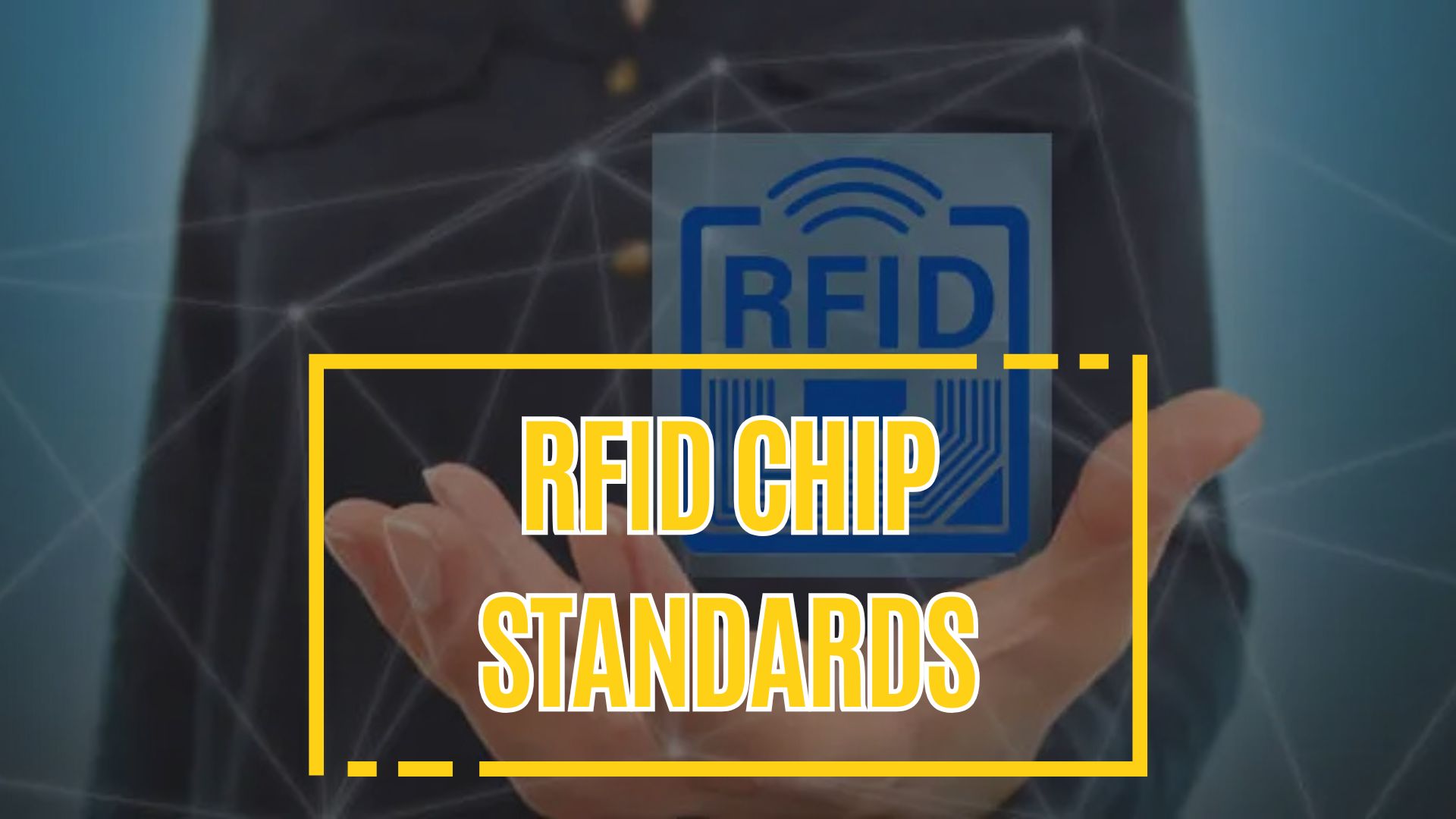
RFID Chip Standards to Follow
To ensure secure, reliable and efficient RFID data communication, compliance with communication protocols between RFID tags and RFID card readers is extremely important. Of course, without compatibility, this communication process will definitely be interrupted, affecting the entire RFID system.
RFID standards and protocols are the basis for RFID chip design. Accordingly, there are a number of popular RFID standards and protocols such as ISO/IEC 18000, ISO 11784, ISO 11785, ISO/IEC 14443, ISO/IEC 15693, EPC Gen2,…
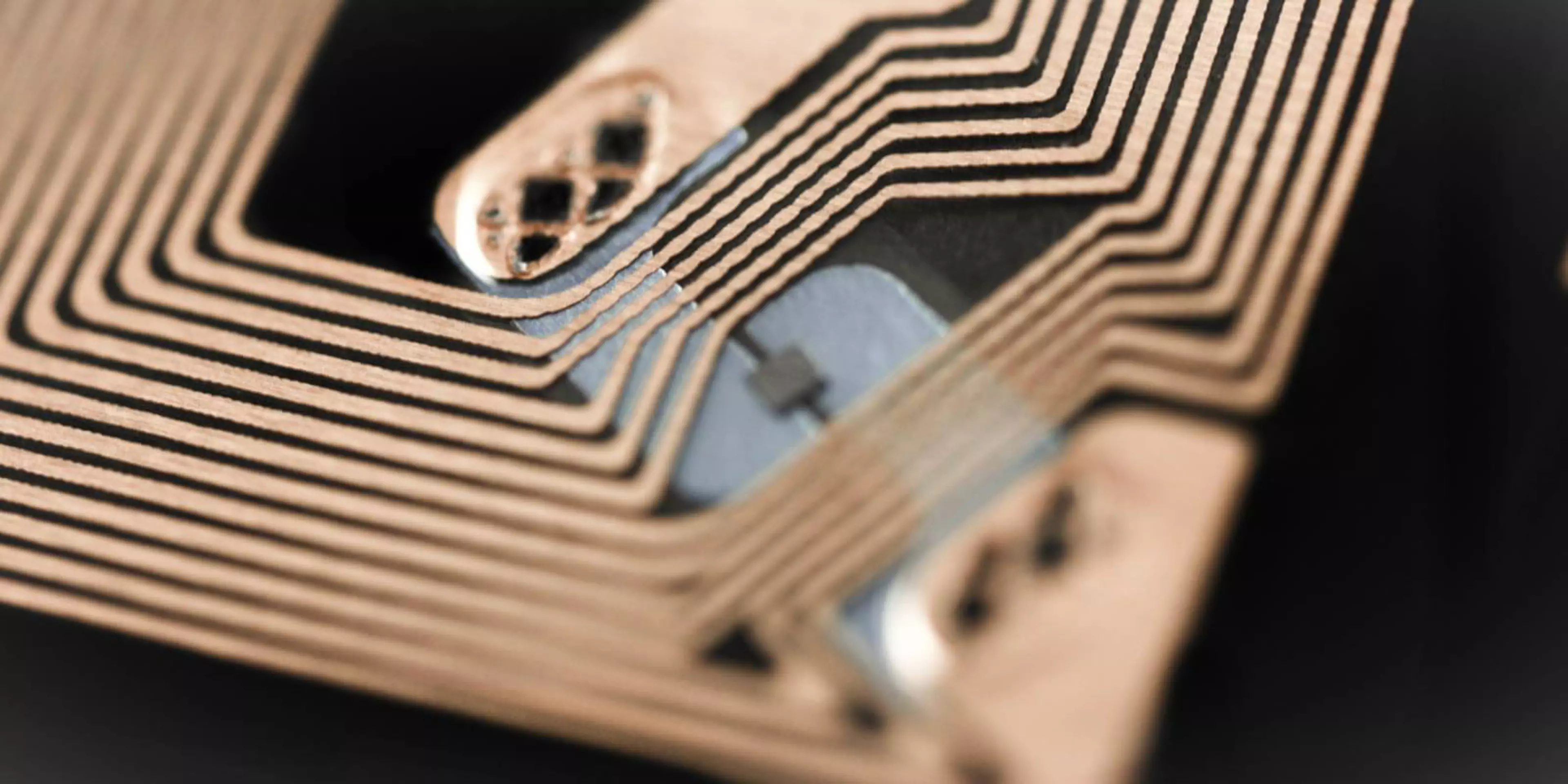
Below is a summary of RFID chip standards that readers should refer to:
ISO 11784/11785 (134.2 kHz)
ISO 11784 and ISO 11785 are the foundation for RFID applications in livestock, RFID in animal management and identification including livestock, pets and even wild animals.
ISO 11784 defines the standard code structure for RFID tags used in animal identification, including the following main components:
- Country code: This component helps identify the origin of the animal from which country.
- Reserve field: A data area containing additional information related to the animal.
- Animal identification code: Animal identification code, a unique code assigned to each individual animal, allowing tracking and retrieval of information related to that animal.
- Additional Code: May be added to provide more detailed information.
ISO 11785 specifies the technical standards for RFID systems at the low frequency of 134.2 kHz, describing how RFID tags are activated by readers and how data is transmitted between them. Two types of modulation methods are defined in this standard:
- FDX (Full Duplex): RFID tags transmit data continuously while simultaneously receiving energy from the RFID reader signal. FDX has a faster data transmission rate but a shorter reading distance.
- HDX (Half Duplex): These RFID tags store energy from the reader signal and then transmit data in bursts when the reader signal is turned off. HDX has a longer reading distance but a slower data transmission rate.
ISO/IEC 14443 (13.56 MHz)
ISO/IEC is an international RFID chip standard that specifies the characteristics of near-field tags and smart cards operating at HF frequencies (13.56 MHz). RFID tags that comply with this standard have the ability to communicate within a maximum range of 10cm, and can store larger data than other types of RFID tags. ISO/IEC 14443 RFID chips are commonly used in security control, public transport systems, contactless payments, or personal identification and identification solutions.
ISO/IEC 14443 standard structure:
- ISO/IEC 14443-1: Specifies the physical properties including size and material of RFID tags.
- ISO/IEC 14443-2: Radio frequency signal and power interface, specifies the transmission method between RFID tags and RFID readers.
- ISO/IEC 14443-3: Initialization and Anticollision, which helps identify and differentiate, communicate individually with multiple tags within the read range.
- ISO/IEC 14443-4: Data transmission protocol, which specifies how data is transmitted between the tag and the reader.
The card types in the ISO/IEC 14443 standard include:
- Type A card: This type of card has stronger anti-interference ability but lower energy stability than Type B card. This helps Type A card operate effectively in environments with many electromagnetic signals.
- Type B card: Known for better stability but its anti-interference ability is worse than Type A card. Type B card is often suitable for applications that require high reliability.
ISO/IEC 15693 (13.56 MHz)
ISO/IEC 15693 is one of the major RFID chip standards, defining the specifications for long-range tags and smart cards operating at the high frequency of 13.56 MHz. These tags have a read range of up to 1.5 meters and are capable of storing much more data than simple RFID tags. ISO/IEC is a popular choice in many applications that require a wide reading range, typically RFID in libraries, electronic tickets in amusement parks or electronic passports, etc.
ISO/IEC 15693 standard structure:
- ISO/IEC 15693-1: Physical characteristics, specifies the physical properties of RFID tags such as standard size, construction materials, overall structure, etc.
- ISO/IEC 15693-2: Wireless interface and initialization, specifies how signals are transmitted between the tag and the reader, including initialization rules to establish a connection.
- ISO/IEC 15693-3: Anti-collision and data transmission protocol helps the system to identify and read multiple tags at the same time without signal conflicts occurring.
EPC Gen2 Standard (860~960 MHz)
EPC Gen2, also known as UHF Class 1 Gen 2, is a standard developed by EPCglobal. The standard specifies the wireless interface and communication protocol for both passive UHF RFID tags and readers, and is fully compatible with ISO/IEC 18000-6.
EPC Gen2 Standard Features:
- RFID tags can be read at long distances, up to several meters, providing superior efficiency for applications that require simultaneous scanning of large numbers of tags, optimizing time and operating personnel costs for businesses.
- This standard also supports fast data transmission speeds, meeting applications that require “instant” information processing such as RFID in supply chain management, RFID in asset tracking, non-stop toll collection using RFID, etc.
EPC Gen2 Features:
- The ability to protect important information by locking the memory, preventing any unauthorized overwriting or changes to data information.
- Password protection, enhancing security.
- The tag erase command allows the tag to be securely disabled when it is no longer needed, preventing the risk of being exploited.
- User memory allows businesses to store additional information according to the specific requirements of each application.
Electronic Product Code (EPC):
The EPC Gen2 tag stores the Electronic Product Code (EPC), which is a unique identifier that helps access information about the tagged object in a global network.
The EPC structure includes:
- Header: Identifies the type and version of the code.
- Domain Manager: Designates the organization or individual responsible for the code.
- Object Class: Classifies objects by product type.
- Serial Number: A unique number for each product, helping to distinguish products within the same type.
ISO/IEC 18000 Standards
Includes:
- ISO/IEC 18000–1: Generic specifications for wireless interfaces with globally accepted frequencies.
- ISO/IEC 18000–2: Wireless interfaces for frequencies up to 135 kHz.
- ISO/IEC 18000–3: Wireless interfaces for frequencies up to 13.56 MHz.
- ISO/IEC 18000–4: Wireless interfaces for frequencies up to 2.45 GHz.
- ISO/IEC 18000–5: Wireless interfaces for frequencies up to 5.8 GHz.
- ISO/IEC 18000–6: Wireless interfaces for frequencies from 860 MHz to 930 MHz.
- ISO/IEC 18000–7: Wireless interfaces at frequencies up to 433.92 MHz.
Other RFID chip standards
Include:
ISO 10536: ISO standard for Close-coupled Card.
ISO 14223: Radio frequency identification for animals – Enhanced communication.
ISO 15459: Unique identifiers for transport units.
ISO 15693: ISO RFID standard for proximity tags.
ISO 15961: ISO RFID standard for Item Management (including application interfaces, RFID data structure registration, and RFID data structures).
ISO 15962: ISO RFID standard for item management – data encoding rules and logical memory functions.
ISO 16963: ISO RFID standard for item management – unique identifiers of RF tags.
ISO 18001: RFID for item management – application requirements profile.
ISO 18046: Performance testing methods for RFID tags and interrogators.
ISO 18047: RFID ISO standard defines testing including compliance testing of RFID tags and readers.
ISO 18092: Information technology – Communication and information exchange between systems – Near Field Communications Interfaces and Protocols (NFCIP-1).
ISO 21481: Information technology – Communication and information exchange between systems – Near Field Communications Interfaces and Protocols – 2 (NFCIP-2).
ISO 18185: Industry standard for electronic seals (E-seals) for tracking cargo containers using 433 MHz and 2.4 GHz frequencies.
ISO 24710: Information technology, automatic identification and data capture techniques – RFID for item management – Basic tag plate functionality for ISO 18000 wireless interface.
ISO 24729: RFID implementation guide
ISO 24730: RFID real-time location systems
ISO 24752: System management protocol for automatic identification and data capture using RFID.
ISO 24753: Wireless interface commands for battery-powered and sensor-assisted functionality.
ISO 24769: Real-time location services (RTLS) test methods – conformance testing.
ISO 28560-2: Specifies coding standards and data models used in libraries.
ASTM D7434: Test method for performance of passive RFID tags on pallet or unit loads.
ASTM D7435: Standard Test Method for Determining the Performance of Passive RFID Transducers on a Loaded Container.
ASTM D7580: Test Method for Passive RFID Tag Reading on a Uniform Load by Rotating Wrap Method.
Why Are RFID Chip Standards Important?
The diversity of RFID applications requires compatibility and synchronization between components in the system. Therefore, RFID chip standards are considered the “common language” that ensures this compatibility.
Standards ensure that RFID chips from different brands can communicate with the same reader, thereby facilitating integration into existing warehouse management systems, ERP, etc. of enterprises. In addition, RFID chip technical standards clearly specify operating parameters, ensuring that the data reading and writing process is performed efficiently, quickly with almost absolute accuracy.
Compliance with standards not only ensures the compatibility and performance of the RFID system but also meets legal requirements as prescribed, reinforcing users’ confidence in the quality and safety of the global RFID system.
Moreover, standards allow industry resources to be produced on a large scale. On the other hand, compliance with international standards makes it easy for customers to upgrade or expand the system in the future without worrying about compatibility issues, maximally protecting their investment in technology.
The Importance of Mastering RFID Chip Standards
IT Nam Viet is a company with more than 10+ years of experience in the field of RFID technology, committed to providing customers with comprehensive, quality RFID technology solutions at the most optimal price on the market.
We listen and understand the needs of businesses, advise customers on choosing the type of RFID chip, RFID card or RFID reader suitable for each specific application, thereby optimizing investment efficiency. We only cooperate with reputable manufacturers, ensuring that RFID devices comply with international standards, ensuring the quality and durability of the system.
The team of experienced technicians at IT Nam Viet is capable of handling all problems quickly and effectively. We have been affirming our position as a leading reliable RFID technology provider in the Vietnamese market.
Above is detailed information on RFID chip standards that readers should refer to. If you need advice and support on RFID technology, please contact IT Nam Viet via Hotline (+84) 962 888 179!
My name is Le Nam Viet, currently FOUNDER & CEO of Nam Viet IT Company, I graduated from Ho Chi Minh Polytechnic University. I have more than 3 years of experience providing RFID chip technology solutions, RFID scanners, barcode labels and barcode readers. It’s a pleasure to share my knowledge with readers.



 Tiếng Việt
Tiếng Việt